 Crozes-Hermitage vineyards of Domaine Michelas Saint Jemms Crozes-Hermitage vineyards of Domaine Michelas Saint Jemms We headed north on the A7 Autoroute, leaving the ‘galet' filled vineyards of Chateauneuf-du-Pape behind us. Ahead, lay the towns of Orange and Montêlimar. The expansive vineyards of the south gave way to orchards and countryside. As we approached the village of Valence the terrain changed. The steep, terraced, hillside vineyards told us we had reached our destination - and the holy grail of Syrah - the Northern Rhone. Our destination was the town of Mercurol not far from Tain’Hermitage. We pulled into the drive of Domaine Michelas Saint Jemms, a smaller family owned and run establishment and everyone, including the winery dog Tina, were there to greet us. What makes Michelas Saint Jemm unique is that they produce wines from not just one AOC of the Rhone Valley, but several: Cornas, St.Joseph, Crozes-Hermitage and Hermitage. They are also one of the the oldest privately operated wineries in the area and the oldest family owned winery in Crozes-Hermitage. And this is truly a family affair. The property itself goes back to 1861 but wasn’t really developed until 1961 when Robert and Yvette Michelas took charge. Today, three sisters, Sylvie, Florence, and Corine, work alongside brother Sebastien and other family members, oversee the 50 hectares (just over 123 acres) of vineyards and production of 150,000 bottles (12,500 cases). Of course, the prize AOC is Hermitage - a region known to every lover and collector of French wines. The parcels (three noncontiquous parcels total 1/2 hectare/ 1.23 acres) were acquired years ago when a family friend, unable to keep the land in his family’s hands, asked Robert Michelas if he would be interested in purchasing the vineyards. Knowing that opportunities to purchase these scarce and highly prized blocks were few and far between, he jumped at the chance and the rest is Michelas Saint Jemms history!
We were soon loading into the vineyard vehicles and heading away from the winery and through the countryside. We climbed higher and higher into the hills of Crozes-Hermitage, past crumbling castle ruins and row upon row of flowering grape vines.  Horses-not tractors- are used in these steep vineyards Horses-not tractors- are used in these steep vineyards As we soaked in the wonderful vistas, Sylvie explained that, in 1973, Michelas Saint Jemms become an independent winery (rather than being associated with the local co-operative). Sébastien, who is in charge of all the vineyards, set about improving the quality of the fruit and several years ago, they qualified for the new H.V. E. certification. Haute Valeurs Environnmental (High Environmental Vaules) is a newer certification that emphasizes working in harmony with nature. Biodiversity is encouraged “ If there are trees, leave them. If there are grasses, leave them - don’t cut.” said Sylvie. “Birds and animals are welcome!”. We sampled several wines in this gorgeous setting including the 2012 Crozes-Hermitage Blanc, a blend of 60% Roussanne and 40% Marsanne, half of which is oak aged with the balance in stainless.Soft toast on the nose but it’s all about minerals and fruit on the palate with acacia and a touch of marzipan. Sorry to say that this wine, as well as the refreshingly fruity and fresh Crozes-Hermiage Fleur de Syrahne that we sampled next, are not available in the U.S., which I personally feel is a shame as they are delicious and both very food compatible and would be appreciated by the North American palate. Luckily, the 2011 Crozes-Hermitage ‘Signature’ Rouge is! With fruit grown on chalky-clay soils, this is an aromatic Syrah. Fresh black fruit aromas are both fruity and meaty making this a versatile sipper or dinner companion. At at suggested retail of $25 USD it is a wonderful introduction to the signature grape of the Northern Rhone. It was now lunch time. In France, this a ‘sacred’ part of the day - a time to stop and recharge with food, family, and, naturally, some wine. We were very fortunate to be invited to share this time with the family (including Tina and Emmi the cat) and soon discovered they had prepared a veritable feast of traditional fare reflecting their Drome and Ardeche regional roots.
It was now time for the next course - a local specialty of the pre-Alps region of Grenobles - Ravioles du Dauphiné. These tiny little pockets of pasta are filled with cheese, herbs and cream. Sylvie served these in wonderful ceramic dishes which, as with the other artisan table wares, were produced ‘just down the road’. Although our ravioles were topped with local Extra Virgin Olive Oil and fresh basil from the garden, we were told they were also delicious baked in a gratin with courgettes (zucchini). I can only imagine! The next selection of wines, are, I’m sorry to say, not available in the United States but would give any wine lover an excellent excuse to visit the winery! Under the ‘Terres d’Arce’ label, Michelas Saint Jemms bottles all four AOC - Crozes-Hermitage, Saint Joseph, Cornas and Hermitage and are the only independent producer to do so. These are their ‘prestige’ bottlings - what an New World winery might call their ‘Reserve’ tier, showing the distinctive character of each terroir and its interpretation of the Syrah grape. These wines consistently score highly in such respected publications as the ‘Hachette Wine Guide’ and the ‘Gilbert & Gaillard' wine magazine, not to mention Robert Parker’s ‘Wine Advocate’. We were thrilled to try all the offerings, including the Hermitage (of which they only produce 600 bottles!) and tried our best to convince everyone, especially Sales Manager Laurent Gomez, that they should make these Rhone treasures available stateside! No French meal is complete without ‘a little something’. A large dish of exquisite local peaches and apricots appeared (Hermitage is equally famous for the delectable stone fruit, it seems) plus a big platter of ripe red cherries. Another regional delicacy appeared on the table. A large, round yeast bread, ‘Pogne de Romans’ which, translated from Old French, means ‘by hands’. Similar to a brioche, these are made for special occasions and holidays and are lightly scented with orange blossom water. This particular pogne came from an old and revered bakery, L. Ronjat in the village of Saint Donat sur l’Herbasse, where they have baking since the 18th century. Too soon, it was time for the family to return to the wines and for us to get back on the Autoroute. It had been an extraordinary day, filled with the wonderful ‘connections’ that only wine can make. We felt so blessed to share in the traditions of the region and now, whenever I think of the Northern Rhone Valley I smile, remembering the day, their gracious hospitality and wines made with true love, respect, passion and joie de vivre.
Epilogue: As I was writing this post, I received a message from Jeanne. She was preparing to go and help out with the Syrah harvest in the Cornas vineyards of Domaine Michelas Saint Jemms. “Pictures, please!” I requested. How fitting that we can now see, full circle the literal ‘fruits’ of their efforts and the continuation of Vendage 2014. All photos below courtesy of Jeanne Peron, Benson Marketing who was kind enough to arrange this visit. Merci!
0 Comments
NOTE: All wines tasted at this event were provided by the sponsoring wineries. Please see my page ' Submissions, Reviews, Invitations & Disclaimers'. Here we go with Round Two of the Wine Bloggers Conference speed sipping, slurping, spitting and blogging extravaganza. As with the whites, we were given five minutes to absorb not just the wine itself but also the story of the winery and the process of the winemaking. A challenge, to be sure, but a good one. So I present to you the ten wines brought to our table, just as they were described at the time (with typos corrected to protect the innocent). 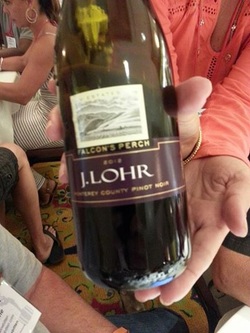 J. Lohr Pinot Noir J. Lohr Pinot Noir J Lohr Falcon's Perch Pinot Noir 2012 Award winning and inky $17. Slighty smokey- succulent silky strawberry. 13.5% alcohol means really drinkable. Can we say BBQ salmon with something chocolaty for afters?  Westerly from Santa Barbara County Westerly from Santa Barbara County Westerly Fletcher's Red 2010 Bordeaux style blend from Happy Canyon AVA . Black juicy berry meets licorice and black plum. Dark cocoa and earth and terrific balance of fruit acid and tannin keeps this rich and balanced. Sip alone or try with some braised short ribs. Winemaker hails from Harlan Estate. Need I say more? 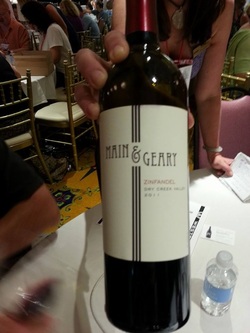 BevMo's own from Sonoma BevMo's own from Sonoma Main and Geary Dry Creek Zinfandel 2011 Big and plush palate zin from BevMo Private label series $19.95 and even less when you go to the 5 cent sale. Heat up the grill and get your party started with this very quaffable wine.  Not your typical Napa winery! Not your typical Napa winery! Cornerstone Cellars 'The Cornerstone’ Napa Valley 2011. Releasing this September & made to be aged for 10 years plus. Blend Cab Sauv/ Merlot/ Cab Franc. Everything is there: acidity, tannin and plummy cassis fruit blending all together. Balanced wine to savor in the years to come. Only 100 cases.  Little Winery, Big Hart. Little Winery, Big Hart. White Hart Pinot Noir 2012 Santa Lucia Highlands Central Coast 2012 40 year old vines in this cooler AVA brings out dark strawberry aromas with juicy red currants and subtle clove nutmeg spice. An elegant feminine Pinot made for sipping or cuisine. Delicious.  Photo Courtesy of Banfi Wines. Photo Courtesy of Banfi Wines. Banfi Centine Rosso 2012 Banfi Wines are in the house. Sangio-Merlot marriage is your everyday "let's have some wine with dinner" vino and at around $10-12 you can make this tasty little fellow your house wine. The soil is limestone dominant so we have great structure welding together cherry, berry and a bit of tar with great palate cleansing acidity. Bueno.  Saperavi is the variety - Marani Winery Saperavi is the variety - Marani Winery 2008 Satrapezo Saperavi from Georgia - the country! The grape is native to Georgia and the juice as well as the skin is red giving the wine a deep opaque hue. Rustic and earthy with plummy notes. Interesting. 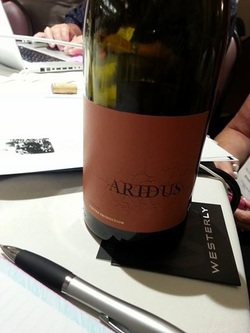 Aridus Syrah from Arizona Aridus Syrah from Arizona Aridus 2012 Syrah The winery is in Arizona but while they wait for the vines to produce they have sourced from the Russian River for this vintage. Dried sage herbs and black fruit with solid tannins would be good compliment to grilled meats and root veg.  Family Reserve Cabernet Sauvignon Family Reserve Cabernet Sauvignon Charles Krug Howell Mt Cabernet Sauvignon 2011 Broody and big with dark fruit and cocoa tobacco leaf. A touch of Petit Verdot and all French oak ups the anti on this voluptuous red. Prime Rib is calling.  Ottimino-Exclusively Zinfandel Ottimino-Exclusively Zinfandel Ottimino Vineyard 2011 Russian River Valley Zinfandel Cooler climate means longer, slower ripening so higher acidity and low alcohol- for a Zin!! Dark strawberry jam and cassis with black Dutch licorice, tealeaf and vanilla bean. Thinking some Tex-Mex. NOTE: All wines tasted at this event were provided by the sponsoring wineries. Please see my page ' Submissions, Reviews, Invitations & Disclaimers'.
 The San Diego International Wine Show was held last weekend, April 26 & 27 in Del Mar, California. I was invited to attend as both a member of the Press and as a presenter. Not quite sure which role was more fun! This was the third year for the event and this time they did, indeed, go international, with wineries and wines from Spain, Italy, Mexico, Portugal, Chile, Argentina and, of course, France. Local representation included Napa, Sonoma, Temecula and San Diego. For those of you who attended my seminar, "There's No Place Like Rhone!" I say thank you and hope you enjoyed such an abbreviated visit to this truly wonderful part of the wine world. Forty-five minutes goes way to fast. If you'd like to know more about the Rhone Valley, please visit my Student Resources page where you'll find all kinds of links and information on the wines and food of the region. I'd also like to thank KK LaFournaise for wrangling me into doing this, Donato Santarsieri, and Live Fit Magazine for their wonderful, live coverage of the event. Check out their YouTube page for a full recap. So, what should my topics be for next year? Disclosure: Wine tasting is a highly individual experience and, scientifically, none of us perceive wine in exactly the same way. The opinions expressed in this post are mine and mine alone and although the wines sampled were supplied by the designated wineries for review I describe them as I see them. 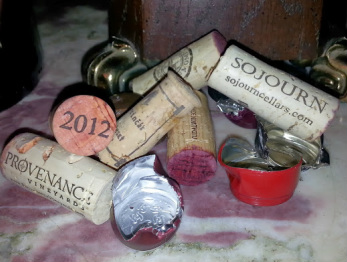 When you are a wine educator it’s natural that people ask you a lot of wine related questions. One of the most frequent queries has to do with price. Why, people ask, does one Chardonnay/Merlot (insert variety name here) cost more than another? Is it really worth paying more? A while back, the Temecula Wine Council tasted a selection of wines that had one thing in common: they were all over $40 retail. Considering that the average price paid for a bottle of wine is around $6.30 1 to many imbibers out there, these prices are a splurge. So let’s have a look at the wines we sampled and see if we can answer this burning question!  First up was a non-vintage white wine from Paso Robles, “Le Cuvier XLB Chardonnay Reserve”. (retail $55). The grapes were fermented with their skins, somewhat unusual for a white wine, and then barrel aged for 5 years. The end result is a big, bold interpretation of Chardonnay, orangey gold in color and meant for food pairing rather than leisurely sipping. It would be a good match for hard cheeses or spicy hummus. Másut Vineyard & Winery in Mendocino California is owned by the third generation of the well-known Fetzer family – Ben and Jake. Their 2012 Pinot Noir (retail $40) is produced from organically farmed estate vineyards. The yield is low, about 3 tons per acre and grapes are all hand sorted. This attention to craft continues through the winemaking stage and the wines are aged in 33% new French oak barrels for 10 months. The result is a New World style Pinot with dark silky berry notes showing a hint of clove, cigar box and kirsch. This wine was paired with Mushroom Risotto, which was terrific, as were some spicy lamb meatballs. Another Pinot Noir followed, this time from the Sonoma Coast. Sojourn Cellars Sangiacomo Vineyard 2012. (retail $54) This is the flagship vineyard for Sojourn with low yields and high quality fruit. Berries are sorted in the vineyard and again after harvest leading to small lot fermentation and barrel aging. This Pinot shows ‘Old World’ flair – soft strawberry, cherry and dried raspberry fruit, with rose petal and earthy, forest tones. In classic, Burgundian style it proved to be a great sipper and was equally at home with savory ‘gourgere’ cheese puffs, as well as the risotto.  Staying in California, we moved on to Tudal Family Winery ‘Cliff Vineyard’ Cabernet Sauvignon 2010. (retail $65) This small, two acre, vineyard, lies just north of Napa in the Oak Knoll district and yields a small 200 cases. Aged for 12 to 18 months in 80% French and 20% new American oak barrels, this wine has a gorgeous deep garnet color. Aromas of ripe forest fruits and vanilla lead to walnut, humidor and roasted green pepper on the palate with medium tannin. Bolognese stuffed Bell Peppers were a terrific compliment to the wine. Another Cabernet followed, also from Napa, Ca’ Momi 2011 Reserve Cabernet Sauvignon (retail $65). This winery was started in 2006 by three Italian winemakers who fell in love with Napa. After consulting and working with many of the finest growers in the area, they decided to produce their own wines and knew the best fruit to source. The 2011 Cabernet has lots too offer – jammy berries and dark currents, with tones of tobacco and dried sweet grass. It paired well with the food offerings at hand but I think it would be a terrific choice with the wonderful offerings at Ca’ Momi’s ‘Enoteca’ in Napa! Provenance Vineyard’s Cabernet Sauvignon ‘Oakville Beckstoffer to Kalon Vineyards’ 2010 (retail $89) was our last red of the evening. With fruit hailing from one of the most historic vineyard sites in the Oakville region of Napa, the wine is a true American Cab. Deep ruby hues meet rich blueberry and black fruit, laced with fresh sweet baking spices, toasty oak and licorice. The tannins are supple and refined making this a fantastic, versatile choice for food or to savor on its own.  Our last selection was a complete departure both in style and geography – a Czech ‘Straw wine’. Slámové Vino, Ryzlink Rynsky from Mercincak Winery. (retail $63 for 375ml) This rich and refreshing dessert wine is created with Riesling grapes that are harvested late in the season so the berries are high in sugar and low in water. The clusters spend four to six months resting on straw mats. During this stage sugar levels increase before the grapes are crushed. The fermented wine is then aged in barrel. The result is a wine moderate in alcohol, around 11% and very high in residual sugar! This winery is the largest Biodynamic grower in the Czech republic and has been specializing in traditional grape varieties and styles since 2008. This incredible attention to detail shows in the beautiful balance of the wine. The fresh acidity ensures that the sweetness doesn’t overpower, so you have a silky nectar filled with aromas and flavors of tropical fruits, rich citrus and fragrant honey. A tropical fruit trifle proved a tasty companion. So, what was it about these wines that merit the price? A combination of elements can contribute – extended barrel aging and the continuous attention of the winemaker, new (and pricey) oak, hand sorting of the grapes both in the vineyard and at the crushpad, small lots and sought after vineyards. All these wines shared a common denominator: dedication to quality. That’s something you probably won’t find in a $4 bottle! 1 “Consumer Wine Trends” Erin Guenther, winebusiness.com Jan. 21/2013  One of the great perks of being involved with the wine industry, in all its many permutations, is the chance to taste and learn on a continual basis. Most of the offerings from wineries, especially larger producers or those affiliated with the more ‘corporate’ establishments, are focused on sales. After all this is the wine ‘business’ and without sales we would all in a sad state. But every now and again an invitation appears for a more ‘educational’ experience and these are the ones that get me excited. Such was the case last month when I attended the “Sommelier Series” event sponsored by Chalone Vineyards. The seminar was held at the stunning Lodge at Torrey Pines in La Jolla, CA. This elegant, craftsman-style resort is home, I’m told, to a legendary golf course but my focus was on the wines! 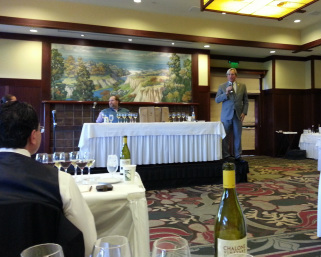 The workshop was conducted by Robert Cook, Winemaker for Chalone and Gilles de Chambure MS with a comparison tasting of several vintages from Chalone Vineyard and wines from Bourgogne.  Chalone Vineyards were first planted in 1919 by Frenchman Charles Tamm. It seems he was searching for soil that reminded him of his native Burgundy and found them in this limestone rich terrain in the shadow of Pinnacles National Monument .  Today, these are the oldest producing vineyards in Monterey County and produce award winning Chardonnay and Pinot Noir, just as Monsieur Tamm had dreamed of! In 1966, under owner/winemaker Dick Graff, Chalone set the standard for California Chardonnay and today, although it is owned by a large corporation (Diageo Chateau & Estate Wines), the wines are still crafted with respect for both the vineyard and the distinctive terroir. These wines certainly held their own when tasted against two delicious vintages from Burgundy and the passion of both gentlemen enhanced the experience. I shall be writing more extensively on the terroir, history and vintages of the Chalone AVA in the near future (more on that to come - stay tuned!). A big “Thank you” to Angela Bortugno and Lauren Watters of Chalone Vineyards for organizing a well orchestrated and classy event. Speaking to the other Sommeliers and educators, it was a terrific experience all around and Chalone should expect quite a few industry visitors in the months ahead. Disclosure: Wine tasting is a highly individual experience and, scientifically, none of us perceive wine in exactly the same way. The opinions expressed in this post are mine and mine alone and although the wines sampled were supplied by the designated wineries for review I describe them as I see them.  The connection between the grapevine and Greece is almost as old as wine itself. The ancient Greeks spread viticulture throughout the Ancient World and, for them, wine was not just a commodity but life and culture as well. So with this long history in mind, it was with great excitement that I joined with other members of the Temecula Wine Council to sample five wines kindly supplied by the “New Wines of Greece”. For many of us, when we here “Greek wine” we immediately think of ‘Retsina’, perhaps crafted in rustic old wineries from grapes we can’t pronounce! I am glad to report that nothing could be further from the truth. There has been a mammoth revival in the Greek wine industry, beginning in the late 20th century. Many local winemakers, who ventured to wine producing areas throughout the world, have returned to their roots, building shiny new production facilities that rival those of the ‘New World’. While embracing many new winemaking techniques there is desire to blend them with time-honored philosophies such as biodynamic and organic viticulture and the use of indigenous grape varieties. And so, we gathered at the Dorland Mountain Arts Colony, just outside Temecula, CA. The fresh air and solitude made for the perfect venue. Each of the six members attending the tasting were assigned one of the wines and asked to prepare a compatible dish for everyone to share. As you will discover, much of the fare paired well with many of the wines, showing just how food friendly and versatile these vintages turned out to be! First up was “Thema 2012” from Pavlidis Estate near the Macadonian town of Drama in northern Greece. A 50/50 blend of Sauvignon Blanc and Assyrtiko, (ah-SEER-tea-ko) the wine is a prime example of old meets new. The region of Macadonia has been a prime grape growing area for millennia and founder Christoforos Pavlidis has been cultivating both native and international varieties since 1998. The winery embraces modern viticulural practices on its 148 acres planted on a variety of soils in two vineyard sites. The winery itself is state of the art and visitors are welcome in their modern tasting room located on the “Wine Road of Dionysus”. The wine was delightful, with a subtle, elegant nose of lemon cream enchanced with touches of fresh green herbs. The zippy acidity and lime zest flavor accentuated the saltiness of the smoked salmon brought to pair with it. Our second vintage came to us from the home of the famous Greek varietal, Assyrtiko – the Aegean island of Santorini. 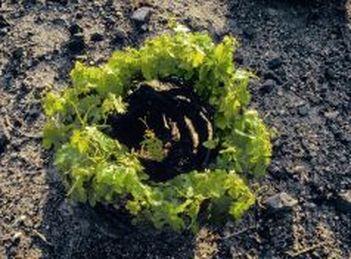 courtesy New Wines of Greece.com courtesy New Wines of Greece.com Domaine Sigalas Assyrtiko-Athiri 2011 is another example of traditional grape varietals truly showing their ‘terroir’ through more modern production. Domaine Sigalas was founded in 1991 and by 1998 had constructed a brand new winery/production center near Ola, in the northern part of the island. Their 47 acres of vineyards are planted on volcanic soils comprised of cinders, lava and pumice. They specialize in indigenous grape varieties grown in the traditional manner unique to Santorini. Vines are trained low to the ground, woven around itself like a round basket. This format, called a Kouloura meaning wreath or basket, protects the vines from strong winds and also shields the grape clusters from the intense, direct sunlight. The wine was a prime example of how the local white grapes of Greece have evolved to withstand the heat and sun of the Mediterranean without losing any of their distinctive, refreshing acidity. The clean, citrusy aromas were a true indication of what was found in the glass! Amazing, racy, mouth-watering acidity combined with a slight hint of sea air minerality and touches of lime blossoms. It was a terrific compliment to the steamed artichokes in olive oil, herbs and seasonings; the wine acting like a spritz of brightness, bringing out the flavor of the vegetable and freshness of the herbs. The last white of the evening also hailed from Macadonia - Ovilos Estate Biblia Chora 2010 a blend of a traditional native grape (50% Assyrtiko) and an international variety (50% Semillon). Vineyards here were first planted by the Phoenicians who found this “Golden Mountain” while in search of precious metals. Alexander the Great mined gold here to finance his expeditions and the Cult of Dionysus (or Bacchaus to the Romans) made their wines from Macadonian fruit. But enough history! The winery’s founders both studied in Bordeaux and returned to their homeland to make wine. The original 70 acres were planted in 1998 and now there are close to 350, all of which are farmed organically. A modern winery, built to resemble a grand Bordelais Chateau, was built in 2001 and their efforts have paid off; the wines have won numerous awards throughout the world.  This blend had a beautiful brilliant gold appearance, reflecting the 8 months the wine spent in oak. The aromas were clean and fresh with notes of golden apple, soft fruit blossom florals and a suggestion of dried apricot. The palate was supple and honeyed showing touches of mango and toasted pine nuts. It went very nicely with the food I had paired – grilled chicken Breast with herbed zucchini stuffing. The wine lifted the herbaceous notes in the dish and surprisingly, also complimented the artichokes and another traditional dish – Moussaka. Next up was the first red,“Xinomavro 2008 Urano” from Thumiopoulos Vineyards in Naoussa, also located in Macadonia. This winery is owned by Apostolos Thumiopoulos who, at the tender age of 31, is acknowledged as the ‘rising star’ in this famous wine growing region, Naoussa. His vineyards, all biodynamic, are planted on complex soils – a mixture of marl, schist and granite - in the southern part of the appellation. The winemaker embraces a minimally invasive philosophy when it comes to making wine, letting the grapes express themselves and showing their unique character, vintage to vintage. He uses naturally occurring yeast and little, if any, filtration to produce terroir driven results. This wine, made from the native Xinomavro (ksee-NO-mah-vro) varietal, showed aromas of dark strawberry jam laced with white pepper and soft touches of toasty rye bread. Dried tomato and a slightly spicy note lingered on the finish. The tannins and acidity were nicely balanced, which made it a wonderful compliment to the tasty ‘Boubaria’ – a traditional meat sausage of the area, bringing out spicy notes of cumin. It also paired beautifully with the Moussaka and some decadent spiced fig cakes! Our final wine of the evening kept us in the appellation of Naoussa and was also an expression of Xinomavro –“2007 Boutari Grande Reserve Naoussa.” The name Boutari is a familiar one around the world. It is the regions oldest winery – its history goes back 130 years – and has been an ambassador for Naoussa, the Xinomavro grape and Greek wine for almost as long. The vineyards are on the south-east slopes of Mount Vermio where the grapes enjoy lots of sunshine, generous rainfall and are shielded from the cold northerly winds. The marl soils, a mixture of limestone and clay, give the wines their rich body and ageing potential. The Grande Reserve is one of Boutari’s most collectable red wines and this vintage still has room to mature. Prune, plum and baking spices abound on the nose and palate with ripe dark berries and vanilla hanging on through the finish. The tannins are still firm and the acidity bright. Definitely a wine you would want to cellar or use a decanter or aerator to enjoy now. Also on hand was a fantastic Greek dip – feta, oregano, kalamata olives, and sun-dried tomatoes – served with pita chips that went with a variety of the evening’s wines. And lest we forget to mention the sinful chocolate brownies – frosted no less! As expected, they were a treat with both red wines and made a suitable ending to our feast. It was a terrific and enlightening group of wines that made me want to go out and find other “New Wines of Greece” to explore and enjoy. As they say in Greece “Yia Mas” - Here’s to Health! Time to Talk Tasting Room, Wine Club and Customer Service Miramonte Winery-Temecula CA Miramonte Winery-Temecula CA For me, one of the best things I do as a Wine Educator, is to work with Tasting room staff. Often referred to as “servers” or ”pourers”, these important members of a winery’s front line are so much more. Yes, one of the main parts of the job is to pour wine samples for visitors and be pleasant and hospitable, but when a team member loves and excels in their position they are part Host/Ambassador/Educator/Entertainer/Phycologist and Salesperson. Welcoming every person who comes through the door and making them feel at home is common sense. Unfortunately, some establishments go only this far and then drop the ball. An ‘Ambassador’ can tell you what’s going on in the area; where to eat; who has the best picnic spots; talk about other things to do while you visit their part of the world. Yes, there is apparently more to do out there besides visit wineries! Wine ‘education’ is so important, and I know I’m biased in this department, but how can you expect your team to sell your product if they don’t know anything about it? The person who takes your order at Starbuck’s is well versed in coffee and your staff should be schooled in the basics of wine so they can be confident to answer any and all questions that come their way. And with that confidence will come the freedom to ‘entertain’ your guests with stories and humor making each visitor feel special. The ‘phycologist’ will know just the right questions to ask as well as have the patience to listen to your customers in order to ‘feel out’ their preferences and experience with wine. By doing so, the tasting can be tailored to their needs and your staff can suggest the right products. This makes them better ‘salespeople’ without having to badger customers with endless suggestions that don’t interest or appeal to them. Finding the right service, like a Wine Club membership or free shipping, shows that you listened to the individual needs of your guest. So next time you’re swirling your sample at the tasting room bar, don’t forget to take a moment and smile at your ‘server’. |
AuthorWine lover, educator and writer. Archives
March 2017
Categories
All
|





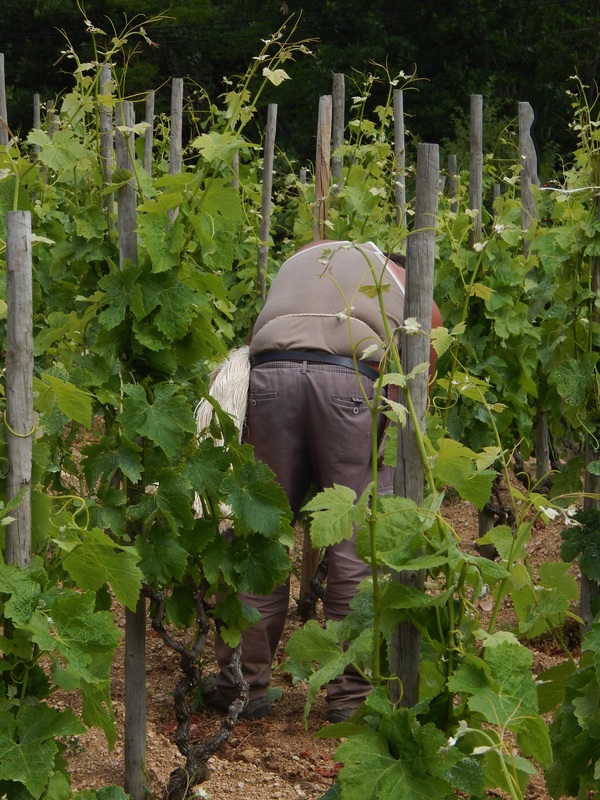








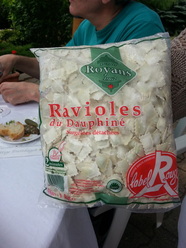



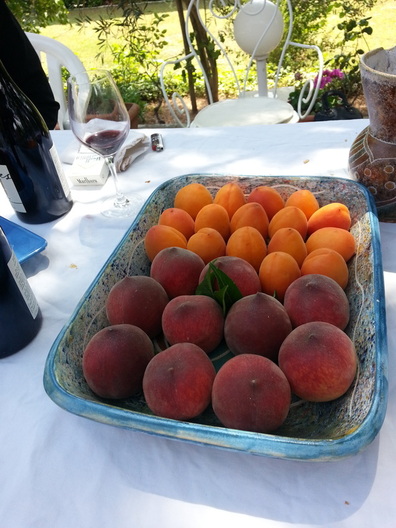
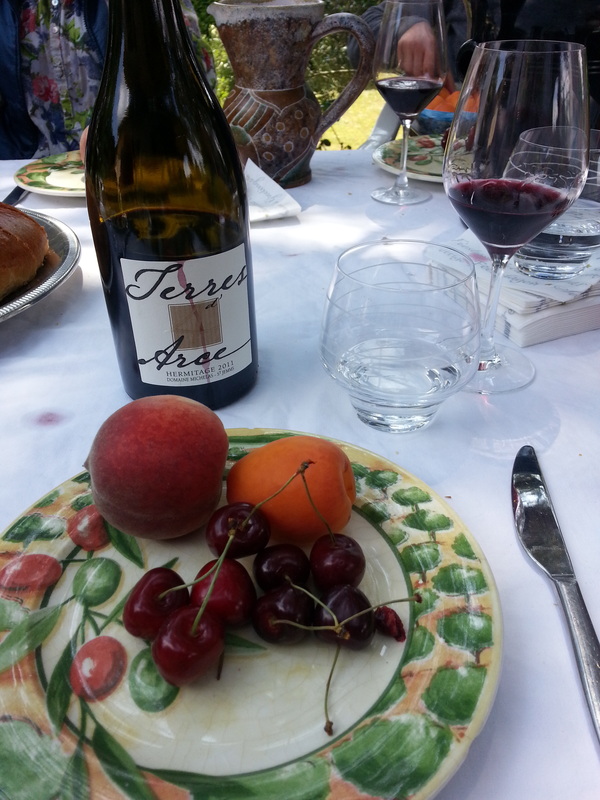



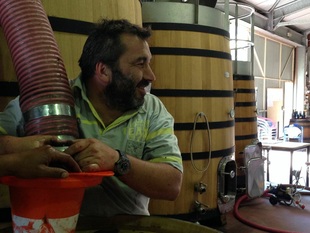

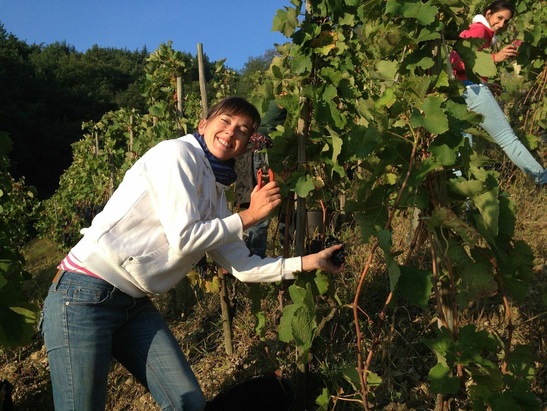
 RSS Feed
RSS Feed

